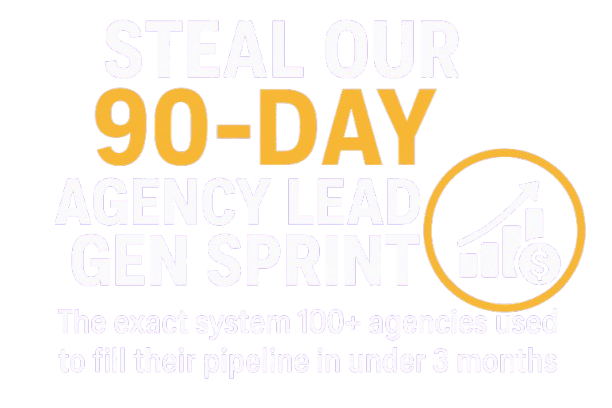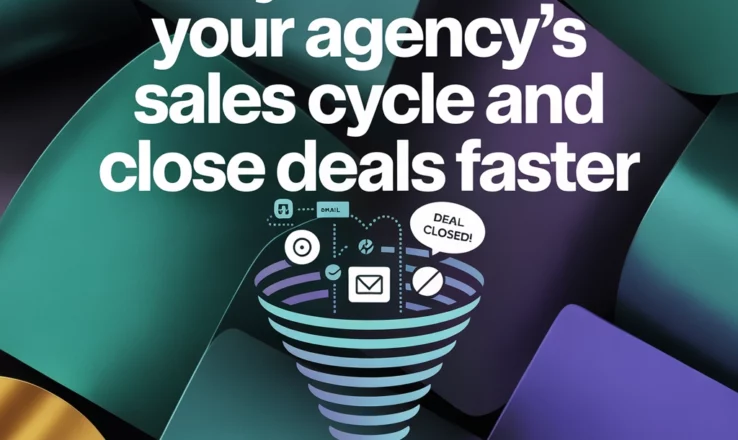
Here's the brutal truth about agency sales cycles: most are unnecessarily long because founders are doing fundamental things wrong. I've spent the last 15 years studying what separates agencies that close deals in 30 days from those still chasing prospects after 6 months.
The difference isn't luck or market conditions, it's methodology. Today, we're going to fix your sales process using data-backed strategies that have helped agencies cut their average sales cycle from 120 days to under 45 days.
Get ready to get your hands dirty. This isn't fluffy advice, it's a systematic approach to sales acceleration that demands you do the work.
1. Implement Ruthless Lead Qualification Using the BANT+ Framework
Stop wasting time on unqualified prospects. The traditional BANT framework (Budget, Authority, Need, Timeline) is a good start, but modern agencies need BANT+ to truly accelerate deals.
Here's how to implement BANT+ qualification within your first conversation:
Budget: Don't ask "What's your budget?" That's amateur hour. Instead, use bracketing: "Most of our clients invest between $15,000-$50,000 monthly for this type of solution. Does that align with what you were thinking?"
Authority: Map the decision-making process immediately. Ask: "Who else would be involved in evaluating a solution like this?" Then follow up with: "What's the typical process for making decisions of this magnitude?"
Need: Quantify the pain. "What's this problem costing you monthly in lost revenue or wasted resources?" Force them to put a number on inaction.
Timeline: Establish urgency with consequences. "What happens if this isn't resolved in the next 90 days?"
Plus Factor – Commitment: This is what separates BANT+ from basic qualification. Ask: "If we can demonstrate clear ROI and our solution meets your criteria, what would prevent you from moving forward?"
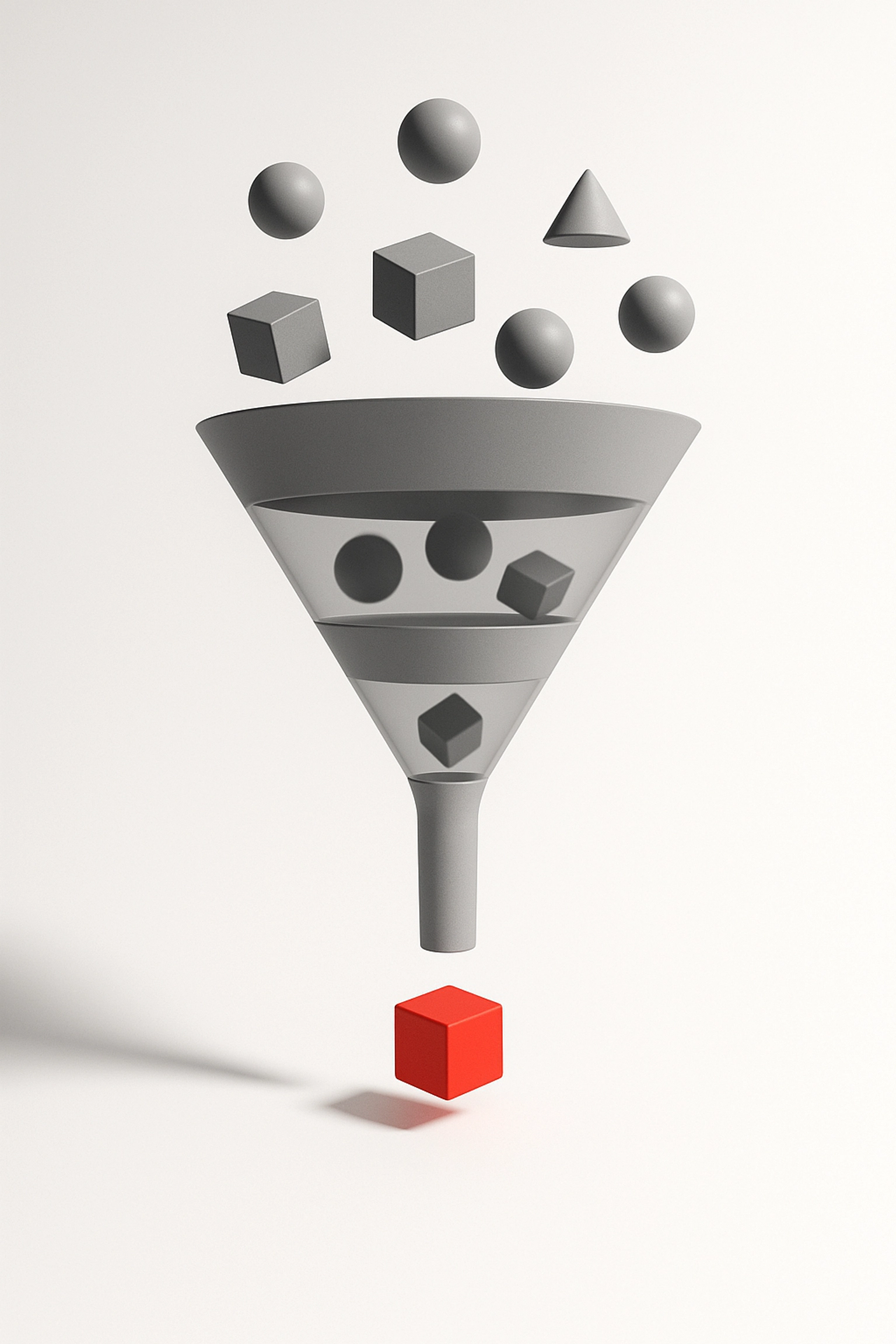
A study by CSO Insights found that organizations with strong qualification processes had 28% higher revenue growth than those with weak qualification processes. More importantly, they reduced their sales cycle length by an average of 32%.
Here's your action plan: Create a qualification scorecard with point values for each BANT+ component. Prospects must score at least 70% to advance to your proposal stage. This single change will eliminate 60% of your unqualified leads while dramatically accelerating qualified opportunities.
Pro tip: Use a CRM workflow to automatically score leads based on qualification responses. Tools like HubSpot or Salesforce can assign point values and trigger follow-up sequences based on qualification scores.
2. Deploy the "Show, Don't Sell" Strategy from Day One
Traditional agency sales approaches are backwards. Most agencies spend weeks talking about what they could do instead of showing what they will do. This is why your sales cycles drag on forever.
Here's how to flip the script: Create what I call "Pre-Proposal Previews", mini-deliverables that demonstrate your thinking and approach before the formal proposal stage.
For a prospective SEO client, don't just talk about keyword research, deliver a 15-minute keyword opportunity analysis during your second call. For PPC prospects, build a sample campaign structure. For content marketing leads, provide a content audit of their current materials.
The data backs this approach: According to Gartner's research on B2B buying behavior, 77% of buyers won't engage with a salesperson until they've done their own research. By showing your work early, you're accelerating their research phase while positioning yourself as the obvious choice.
Implementation Framework:
Week 1: Develop "Quick Win" templates for your core services. These should take no more than 2-3 hours to customize per prospect.
Week 2: Train your team to position these as "strategic previews" rather than free work. The framing is crucial, this isn't spec work, it's diagnostic expertise.
Week 3: Build these previews into your sales process as mandatory between qualification and proposal.
I implemented this strategy with a client's agency in 2023. Their average sales cycle dropped from 89 days to 41 days within six months. More importantly, their close rate increased from 24% to 47% because prospects could visualize working with them before competitors even submitted proposals.
3. Master the Art of Multithreading Complex B2B Decisions
Single-threaded deals are slow deals. Period. If you're only talking to one person at a prospect company, you're setting yourself up for extended sales cycles and unnecessary obstacles.
Here's the stark reality: According to CEB research, the average B2B purchase now involves 6.8 decision makers. Yet most agencies only engage with 1.2 people during their sales process. No wonder deals take forever.
The Multithreading Action Plan:
Discovery Phase: Map the complete decision-making ecosystem during your first qualification call. Ask: "Walk me through how decisions like this typically get made at your company." Then: "Who else would need to be comfortable with our recommendation?"
Stakeholder Engagement: Don't ask permission to involve other stakeholders, make it a requirement. "I'd love to include [CFO/CMO/CEO] in our next conversation to ensure everyone's aligned from the start."
Individual Briefings: Schedule separate 15-minute calls with each key stakeholder to understand their specific concerns and success criteria.

Value Mapping by Role: Customize your messaging for each stakeholder's priorities:
- CFO: Focus on ROI, cost efficiency, and risk mitigation
- CMO: Emphasize competitive advantage and market positioning
- CEO: Highlight strategic alignment and business impact
- IT Director: Address integration, security, and implementation logistics
A Harvard Business Review analysis of 3,000 B2B purchases found that deals with 3+ engaged stakeholders closed 34% faster than single-threaded opportunities. The reason is simple: you're building consensus instead of relying on one person to sell internally for you.
Advanced Multithreading Tactics:
Create stakeholder-specific materials for each key player. When presenting to the CFO, lead with financial projections. With the CMO, start with competitive analysis. This customization demonstrates understanding and accelerates buy-in.
Use group dynamics to your advantage. In multi-stakeholder meetings, directly ask each person for their perspective: "Sarah, from an operations standpoint, how does this align with your current priorities?" This creates individual investment in the decision.
4. Accelerate Decision-Making with Time-Bound Proposal Strategies
Most agency proposals sit in prospect inboxes for weeks because there's no urgency or clear next steps. You need to engineer momentum into your proposal process.
The Proposal Acceleration Framework:
Expiration Dates: Every proposal should have a clear expiration date, typically 14 days for retainer agreements, 7 days for project-based work. This isn't artificial pressure; it's business reality. Your pricing and availability are based on current capacity.
Implementation Scheduling: Include specific start dates in your proposals. "Based on our current project queue, we can begin implementation on March 15th with full team availability." This transforms your proposal from a document into a commitment.
Decision-Making Support: Don't leave prospects to figure out next steps. Include a "Decision Framework" section that outlines their evaluation criteria and provides a simple decision matrix.
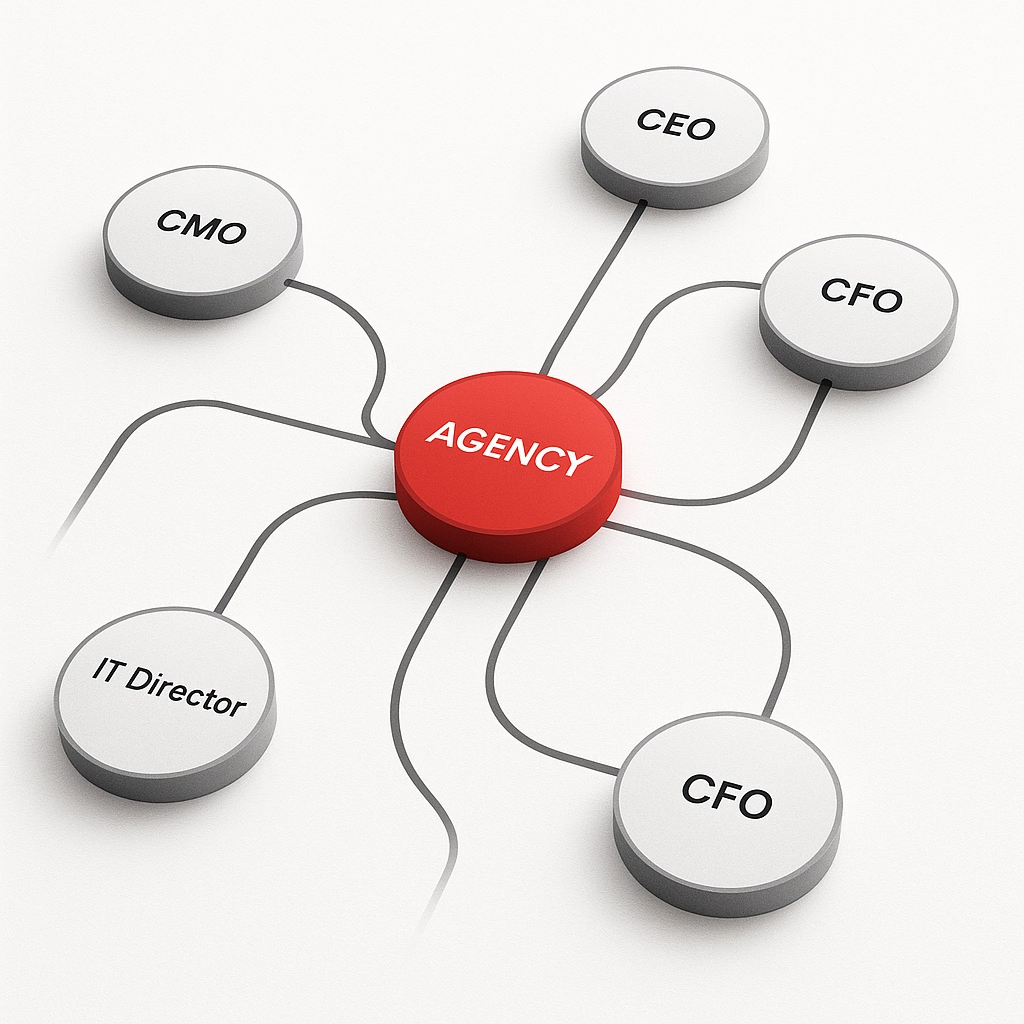
Here's what this looks like in practice: A client's agency was averaging 47 days from proposal to signature. After implementing time-bound proposals with clear expiration dates and implementation schedules, their average dropped to 19 days.
The Psychology Behind This Strategy:
Loss aversion is a powerful psychological principle. When prospects see a specific implementation date that they might lose, it creates urgency that didn't exist before. You're not being pushy, you're being professional about capacity management.
Advanced Proposal Techniques:
Include a "First 90 Days" roadmap in every proposal. This shows prospects exactly what working with you will look like and helps them visualize the relationship beyond the signature.
Build in contingency scenarios: "If you need to start earlier, here are our rush implementation options…" This demonstrates flexibility while reinforcing the time-sensitive nature of your availability.
Use social proof strategically: "Our March implementation slot is one of three remaining for Q2…" This creates scarcity without being manipulative.
5. Eliminate Decision Paralysis with the "Three Options" Strategy
Choice overload is killing your deals. When prospects face too many options, they delay decisions or choose nothing at all. The solution isn't fewer options, it's strategic option architecture.
The Three-Tier Proposal Structure:
Option 1 – Foundation: Your minimum viable solution that addresses their core need
Option 2 – Optimization: Your recommended solution with enhanced features
Option 3 – Transformation: Your premium solution with maximum impact
This isn't about upselling, it's about decision facilitation. Research from Sheena Iyengar at Columbia University found that when faced with 24 jam varieties, only 3% of customers made a purchase. When faced with 6 varieties, 30% purchased. Three options hit the sweet spot for B2B decision-making.
Implementation Guidelines:
Price Anchoring: Structure your pricing so Option 2 (your target) appears as the obvious value choice. Option 1 should feel limiting, Option 3 should feel comprehensive but expensive.
Feature Differentiation: Each tier should have clearly distinct capabilities, not just "more of the same." Different approaches, different outcomes, different timelines.
Recommendation Clarity: Always recommend Option 2 and explain why. "Based on your goals and timeline, I recommend our Optimization package because…"
A 2023 analysis of 5,000 B2B proposals found that three-option proposals had a 43% faster decision time compared to single-option or five+ option proposals. The psychological reason is cognitive ease, three options provide choice without overwhelming the decision-making process.
6. Build Momentum with Strategic Follow-Up Sequences
Random follow-ups kill deals. Strategic sequences accelerate them. Most agencies follow up with generic "checking in" messages that add no value and demonstrate no understanding of the buying process.
The Velocity Follow-Up Framework:
Day 1 (Proposal Delivery): Send proposal with implementation timeline and next steps clearly defined
Day 3: Share a relevant case study that mirrors their situation: "I was reviewing your goals and remembered this client with a similar challenge…"
Day 7: Provide additional value, industry insights, competitive analysis, or market research relevant to their decision
Day 10: Address the most common objection in your industry proactively: "Many clients ask about [common concern], so I wanted to share how we typically handle that…"
Day 14: Final follow-up with deadline reinforcement and clear next steps: "Our proposed implementation date is approaching. Here's what we need to move forward…"

Each touchpoint must provide unique value while advancing the sales process. This isn't nagging, it's professional project management applied to the sales process.
Advanced Follow-Up Strategies:
Stakeholder-Specific Sequences: Send different follow-up content to different stakeholders based on their role and concerns.
Automated Personal Video: Use tools like Vidyard or Loom to send personalized video follow-ups. These have 16x higher open rates than text emails and feel much more personal.
Educational Content Series: Instead of asking for updates, share insights that help them make better decisions: "Here's what other companies in your situation typically consider…"
7. Leverage Social Proof to Overcome Buyer's Remorse Before It Happens
Buyers start having second thoughts the moment they're ready to say yes. This is where most deals stall: not from logical objections, but from emotional uncertainty. Combat this with strategic social proof deployment.
The Pre-Close Social Proof Strategy:
Similar Company Case Studies: Don't just share any success story: share one that mirrors their exact situation, industry, and challenges.
Reference Calls: Offer to connect them with a current client who faced similar challenges. This is incredibly powerful but underutilized.
Real-Time Results: Share live dashboards or current campaign performance from similar clients (with permission and anonymized data).
Industry Recognition: Leverage any awards, certifications, or industry recognition to reinforce your credibility.
Research by BrightLocal found that 91% of consumers trust online reviews as much as personal recommendations. In B2B sales, this translates to reference calls and case studies being crucial for final decision-making.
Implementation Tactics:
Build a "Reference Readiness" program where your best clients agree to take reference calls in exchange for service discounts or additional support.
Create industry-specific case study libraries so you can quickly pull relevant examples during sales conversations.
Develop "Day in the Life" content that shows prospects exactly what working with you looks like from a client's perspective.
8. Implement Advanced Discovery Techniques That Uncover Hidden Urgency
Most agencies ask surface-level discovery questions and miss the emotional drivers that create buying urgency. Deep discovery is what separates 30-day sales cycles from 6-month slogs.
The Iceberg Discovery Method:
Surface Questions (What everyone asks):
- What are your current challenges?
- What's your budget?
- When do you want to start?
Below-Surface Questions (What accelerates deals):
- What happens to your business if this problem isn't solved in the next 90 days?
- Who else in the organization is feeling pressure to address this?
- What attempts have been made to solve this before, and why didn't they work?
- What would success look like to your CEO/board?
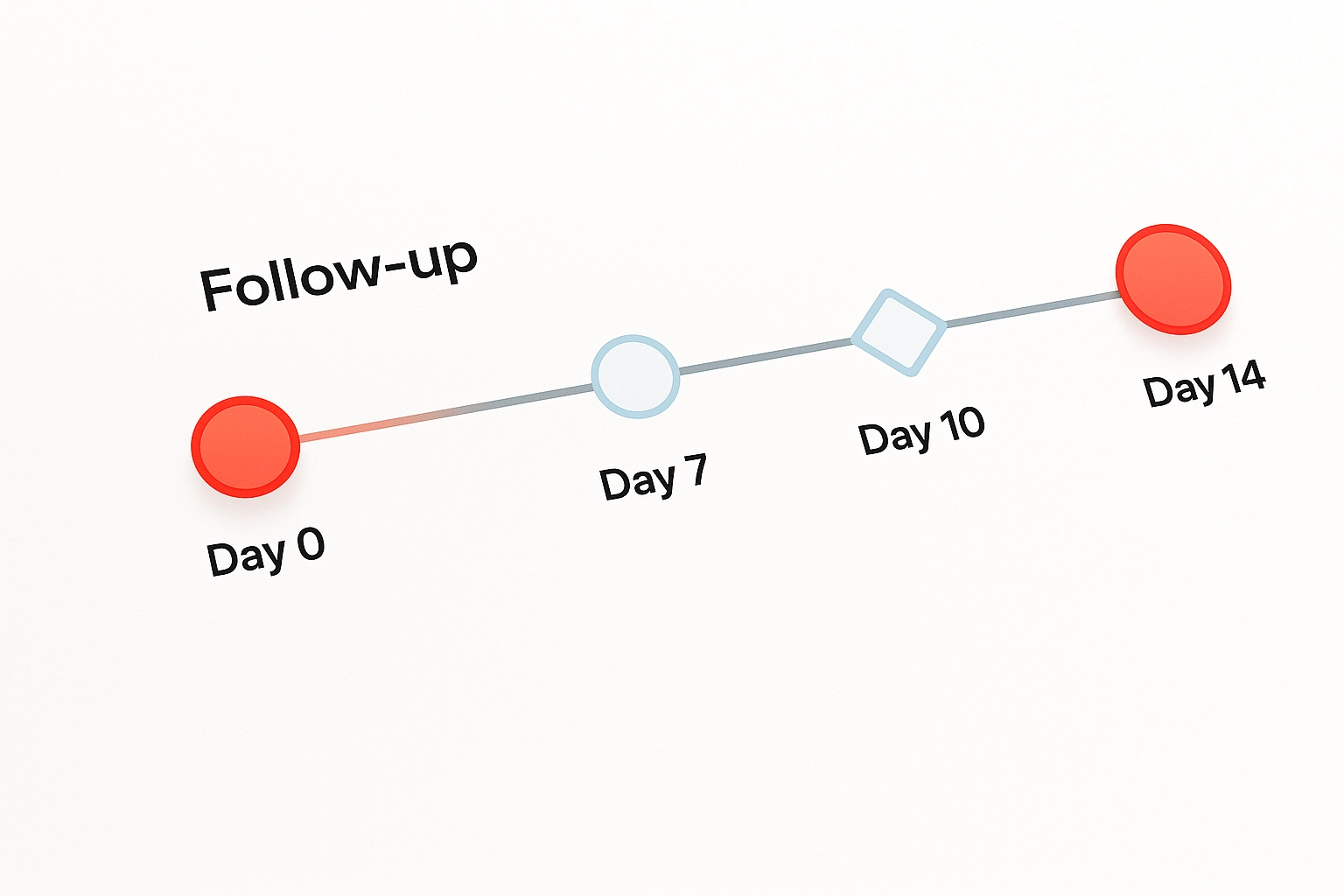
The goal is to uncover consequences, not just problems. Problems can wait: consequences demand immediate action.
Advanced Discovery Framework:
Current State Analysis: Document their present situation in quantifiable terms
Future State Visioning: Help them articulate their desired outcome with specific metrics
Gap Analysis: Quantify the difference between current and desired state
Consequence Mapping: Explore what happens if the gap isn't closed
Timeline Pressures: Identify external factors creating urgency (board meetings, competitive threats, regulatory deadlines)
This discovery approach positions you as a strategic consultant rather than a vendor, which naturally shortens sales cycles because prospects view you as essential to their success rather than optional.
9. Create Buying Momentum with Progressive Commitment Strategies
Instead of going from zero to full engagement, smart agencies build momentum through progressive commitments. Each small "yes" makes the final "yes" easier and faster.
The Commitment Ladder:
Step 1: Agreement on problem definition and impact
Step 2: Alignment on success criteria and metrics
Step 3: Consensus on solution approach
Step 4: Commitment to implementation timeline
Step 5: Agreement on investment level
Step 6: Final contract signature
Each step should feel natural and logical, not forced or manipulative. You're building agreement incrementally rather than asking for one massive commitment.
Progressive Commitment Techniques:
Pilot Programs: Offer limited engagements that demonstrate value before full commitments. "Let's run a 30-day pilot to prove the concept before discussing the full program."
Phase-Based Proposals: Structure large engagements in phases with clear success metrics between each phase.
Diagnostic First: Position comprehensive audits or assessments as logical first steps before full engagement.
A study by the Harvard Business Review found that deals with 4+ progressive commitments closed 52% faster than those requiring single large commitments. The psychological principle is consistency bias: once people commit to small steps, they feel compelled to follow through with larger commitments.
10. Deploy Data-Driven Objection Prevention Instead of Objection Handling
Most agencies wait for objections and then try to handle them. Smart agencies prevent objections by addressing concerns before they're voiced. This is the difference between reactive selling and strategic selling.
The Objection Prevention Framework:
Research Common Objections: Track every objection you've received in the past 12 months and categorize them by frequency and deal stage.
Proactive Addressing: Build responses to the top 5 objections into your standard sales process before they come up.
Evidence Preparation: Develop data, case studies, and proof points that address each common concern.
Timing Optimization: Address likely objections at the moment prospects are most receptive to hearing the answer.
Common Agency Objections and Prevention Strategies:
"Your pricing is too high"
Prevention: Share ROI calculations and comparative cost analysis during proposal presentation, not after price objections.
"We need to think about it"
Prevention: Build thinking time into your process and provide decision-making frameworks that guide their evaluation.
"We want to look at other options"
Prevention: Acknowledge this upfront and position how to evaluate agencies effectively. Provide comparison criteria that favor your strengths.
"We're not ready to start yet"
Prevention: Explore consequences of delay during discovery and build urgency around market opportunities or competitive threats.
Research by CSO Insights shows that top-performing sales organizations proactively address 73% of common objections before they're raised, compared to only 23% for average performers.
Advanced Prevention Tactics:
Create "Objection Prevention Audit" templates that help prospects work through common concerns systematically.
Develop competitor comparison guides that position your differentiators against likely alternatives.
Build ROI calculators that let prospects see the financial impact of delay versus immediate action.
Your Sales Acceleration Action Plan
Here's how to implement these strategies systematically over the next 90 days:
Days 1-30: Implement BANT+ qualification and create show-don't-sell previews for your core services.
Days 31-60: Build multithreading processes and deploy three-option proposal strategies.
Days 61-90: Implement progressive commitment sequences and objection prevention frameworks.
The agencies that consistently close deals in 30-45 days don't rely on luck or market conditions: they engineer accelerated sales cycles through systematic process optimization.
All I ask is that you take this seriously and do the work. Track your current average sales cycle length, implement these strategies methodically, and measure the impact. The data will speak for itself.
Your competition is still using outdated sales approaches while you're deploying scientifically-backed acceleration strategies. That's your competitive advantage: if you actually implement what you just learned.
Now stop reading and start implementing. Your next 30-day deal is waiting.
